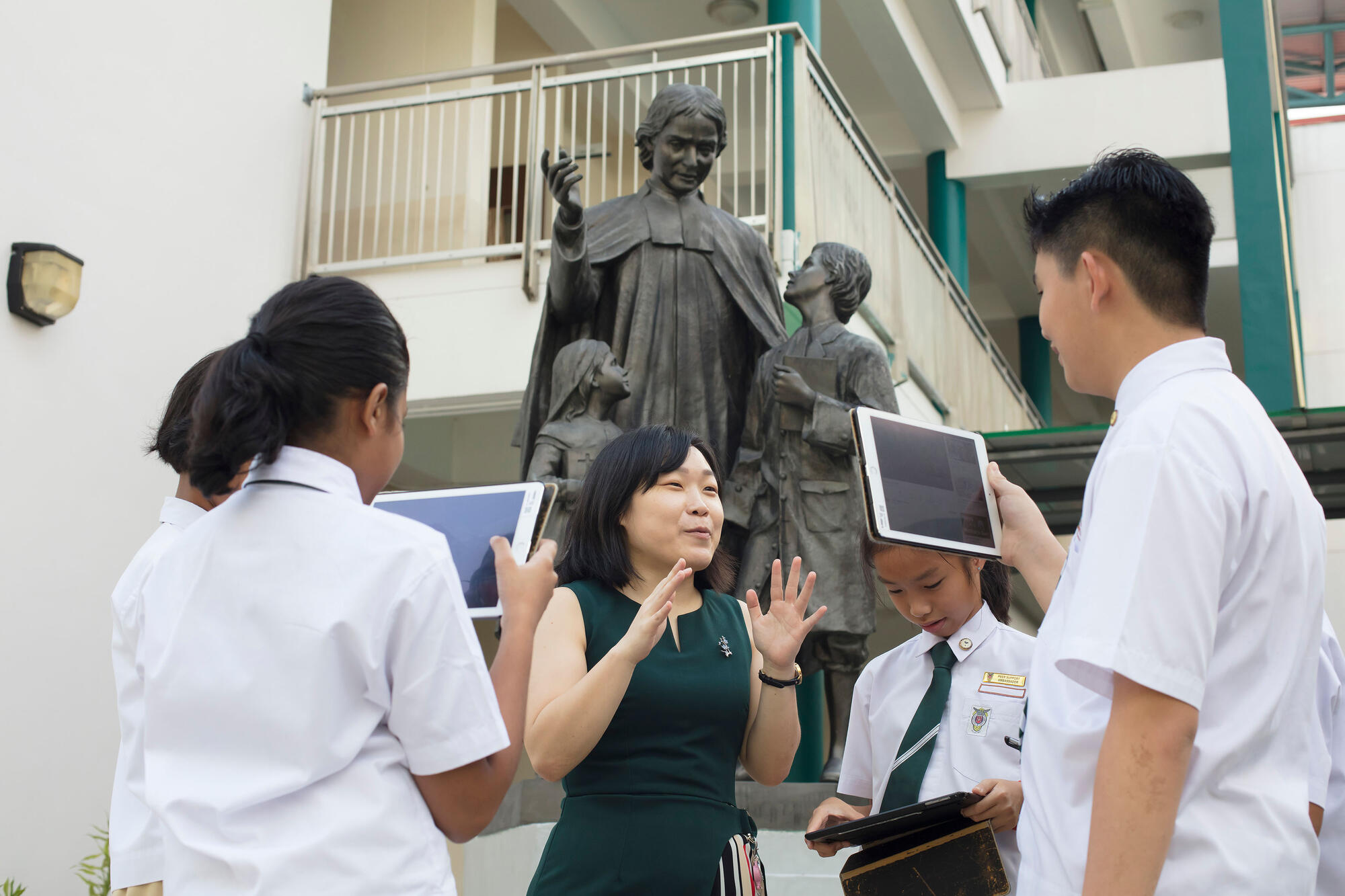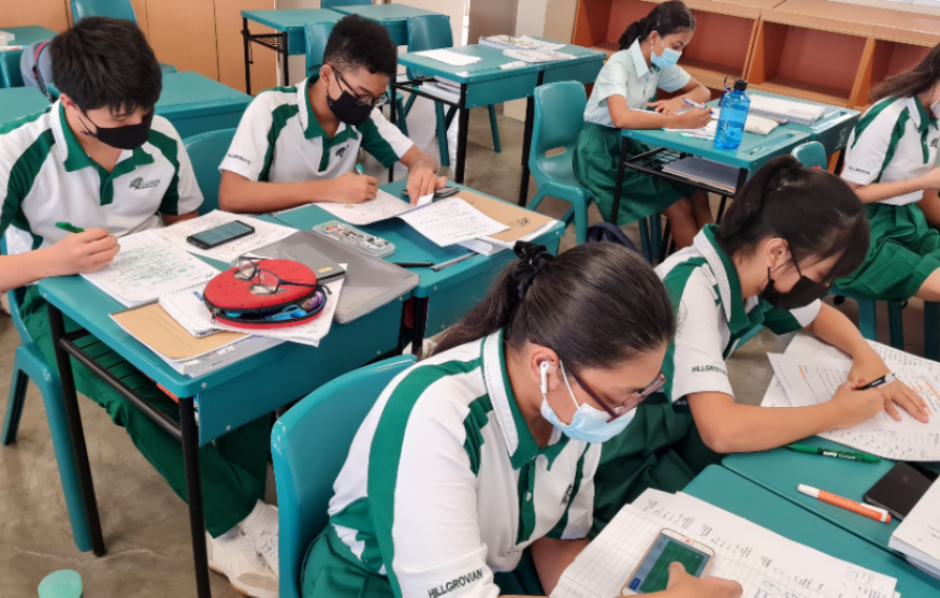Virtual Geography Field Trips that Go Further
27 Mar 2012

Students ges to customise the look of their avatar, and control its movements and actions as it explores the landscape.
Some types of geography fieldwork are impossible in real life without the accompanying challenges, costs and perils, like walking underwater to explore the seabed, trekking along a river to locate its source, and going behind a gushing waterfall to explore it. For students of Ang Mo Kio Secondary School, however, the 3D world of Second Life has brought them a little closer to these experiences – albeit in a virtual environment.
In an initiative piloted by MOE and NIE in five schools in 2011, teachers and students logged in to Second Life, where two custom-designed islands had been leased for their use. Because Ang Mo Kio Secondary School students was the prototype school for the project in 2010, students there have had more time than others to explore the islands.
In a geography lesson on river features, for example, the pilot Sec 1 classes gained access to the virtual world where they assumed the identities of their online characters (or avatars). They could walk, run and fly over the terrain, and even plunge into the rivers to examine the riverbed, and investigate the whole river system. “The 3D graphics are really good, providing a realistic representation of what you might see in real life,” says Mrs Ismail Habibah, Subject Head for Geography. Adds her colleague Miss Lim Liu Xiang Clara, a Geography teacher who was part of the pilot team, “The 360-degree views also make the exploration more interesting and real.”
From conceptual to real-world understanding

The realistic 3D graphics allow students to almost see, feel and experience depth and space, including the geographical features they are studying.
Sec 2 classmates Gerald Lai Sze Hang and Thea Amabelle N Apale were in a pilot class last year and are keen to have more of such online lessons. “As we were given time to explore on our own, it gave us a better idea of the river system,” recalls Gerald. Amabelle chimes in, “It’s hands-on, it’s realistic, and it’s fun!” Being physically away from the classroom added to the fun, as the lesson was conducted in the school’s air-conditioned computer lab.
To get over the “novelty” factor, students were given access to Second Life for an hour outside curriculum time. Not that this dampened their enthusiasm when it was time for their geography lesson. Gerald even suggested having another period for self-directed learning in the virtual world, while Amabelle said the immersive experience helped her to “think out of the box”.

Geography lessons come alive when students enter a virtual world where they can “experience” textbook concepts.
From the teachers’ perspective, there was no discernible difference in the test marks between the pilot and non-pilot classes – but they did not expect any since the lessons only had a span of three weeks. However, the teachers noted that students in the pilot class came away with a better understanding of geographical concepts.
For example, they were able to illustrate their explanations with diagrams, something they had difficulty with prior to their virtual world immersion. “The ability to annotate is an important skill in geography,” notes Mrs Habibah Ismail. The teachers also saw a higher quality of answers from the students as they could compose a one-page answer using their own words and explanations instead of “regurgitating” from the textbook.
The potential for different kinds of learning
Mrs Habibah Ismail is eager to exploit the learning opportunities through using Second Life, such as in the teaching of human geography. “As Singapore is a developed country, our students have no real concept of poverty or overcrowding. Second Life can provide them with a virtual experience,” she suggests.

The immersive environment helps students to visualise better, resulting in a new confidence when they illustrate their answers with diagrams.
In addition to academic content, the virtual world has potential for social-emotional learning and developing life skills such as teamwork, collaboration and negotiation. “We can do role-play or get reticent students to put a voice to their avatars, record it and present their exploration as a documentary,” Mrs Habibah Ismail points out. Parents, too, can get involved as they can go online, buy land and enter another world to communicate or teach their children as a way of bonding.
It looks like some students’ wishes for more adventures in the online world may come true, as geography lessons at Ang Mo Kio Secondary School will re-enter the virtual world in term 3, as part of an MOE initiative. Mrs Habibah Ismail is also rallying other department heads to jointly lease land for the school’s private use. “ICT, Design and Technology, English, History, Geography – there is so much that can be done in Second Life to enhance the children’s learning,” she says.




.jpg)
.jpg)